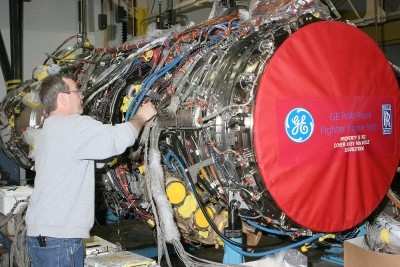$2.9 Billion "Not A Detailed, Comprehensive Estimate"
 A new government report concludes that development of the F136
alternate engine for the F-35 JSF may come in significantly less
that the estimated $2.9 billion, but leaves open the possibility
that it could cost more as well.
A new government report concludes that development of the F136
alternate engine for the F-35 JSF may come in significantly less
that the estimated $2.9 billion, but leaves open the possibility
that it could cost more as well.
In a letter to Senate Armed Services Committee Chair Carl Levin
(D-MI) posted Wednesday on the GAO website, the agency says "DOD
analysts relied largely on data, assumptions, and methodologies
from an analysis done 3 years ago and have characterized the $2.9
billion projection as having an equal chance of being too high or
too low. Therefore, this projection should be viewed as one point
within a range of possible costs depending on the factors and
assumptions used, and not as an absolute amount.
"Different assumptions and more detailed information could
either increase or decrease the $2.9 billion funding projection.
That said, we found two key assumptions made by DOD in developing
the $2.9 billion funding projection that have a significant impact
on the estimated amount of upfront investment needed. These
assumptions were that 4 years of noncompetitive procurements of
both engines would be needed to allow the alternate engine
contractor sufficient time to gain production experience and
complete developmental qualification of the engine, and the
government would need to fund quality and reliability improvements
for engine components. Past studies and historical data we examined
indicate that it may take less than 4 years of noncompetitive
procurements and that competition may obviate the need for the
government to fund component improvement programs. If these
conditions hold true for the alternate engine, the funding
projection for the alternate engine could be lower than DOD's
projection."

F136 Test Engine
The GAO goes on to say that the DOD's alternate engine cost
projection is not a detailed, comprehensive estimate. "DOD cost
analysts stated the projection provides a general-level sense of
the budget required to put the alternative engine on a competitive
level with the primary engine. The analysts noted that DOD was in
the midst of a complex and comprehensive restructuring of the total
JSF acquisition program and they were unable to invest the time or
resources that normally would be part of a more detailed,
comprehensive estimate. Accordingly, they relied largely on data,
assumptions, and methodologies from their 2007 analysis.
"Using the GAO Cost Estimating and Assessment Guide, DOD's
estimate would be characterized as a "rough order of magnitude"
cost analysis. This type of analysis is typically developed when a
quick estimate is needed and limited information is available, and
does not include the same level of fidelity and precision normally
associated with a detailed, comprehensive cost estimate. Table 1
summarizes DOD's projection of additional development and
procurement costs to enable JSF engine competition."

Pentagon officials have said for the last several years that the
F136 engine was unaffordable, and that the money allocated to its
development could be better spent elsewhere. President Obama has
consistently threatened to veto defense appropriations bills
containing funding for the F136 engine, but has not so far followed
through on that threat, and Congress continues to place funding for
the alternate engine in its defense appropriations bills.
 ANN's Daily Aero-Term (04.28.24): Airport Marking Aids
ANN's Daily Aero-Term (04.28.24): Airport Marking Aids Aero-News: Quote of the Day (04.28.24)
Aero-News: Quote of the Day (04.28.24) ANN's Daily Aero-Linx (04.28.24)
ANN's Daily Aero-Linx (04.28.24) Aero-News: Quote of the Day (04.29.24)
Aero-News: Quote of the Day (04.29.24) ANN's Daily Aero-Linx (04.29.24)
ANN's Daily Aero-Linx (04.29.24)





